CHOQUEQUIRAO TREK CLASSIC 4 DAYS
You can visit the architectural complex Choquequirao is situated in Vilcabamba at 3100 meters, considered the last Inka refuge and place of resistance from the invaders, when doing ....
INCA JUNGLE TRAIL 4 DAYS
Our Inca Jungle Trail classic To Machu Picchu combines adventure sports such as mountain biking, rafting, zip line, hot spring and trekking for 4 days until you reach Machu Picchu....
INCA QUARRY TREK 4 DAYS
The quarry of Cachicata was the place of extraction of the stones that were used for the construction of Ollantaytambo and many surrounding areas....
INCA TRAIL CLASSIC 4 DAYS
In the upper area close to the Skies, the Incas built one of their best-preserved cities, now recognized as one of the 7 wonders of the modern world. Many travelers and adventurers come....
RAINBOW MOUNTAIN FULL DAY
According to the research, the coloration of the rainbow mountain is due to the composition of minerals that it has: the pink color is for the red clay, fangolitas and arilitas. The whitish, for the quartzose ...
Friday 11 August 2023
CUSCO IMPERIAL
Thursday 2 March 2023
CUSCO IMPERIAL
𝗠𝗔𝗖𝗛𝗨 𝗣𝗜𝗖𝗖𝗛𝗨 𝗧𝗢𝗨𝗥 – CUSCO IMPERIAL TOUR 5 DAYS
ᴠɪsɪᴛᴀ: ᴄɪᴛʏ ᴛᴏᴜʀ ᴄᴜsᴄᴏ – ᴠᴀʟʟᴇ sᴀɢʀᴀᴅᴏ – ᴍᴀᴄʜᴜ ᴘɪᴄᴄʜᴜ – ᴍᴏɴᴛᴀɴ̃ᴀ ᴅᴇ ᴄᴏʟᴏʀᴇs – ʟᴀɢᴜɴᴀ ʜᴜᴍᴀɴᴛᴀʏ
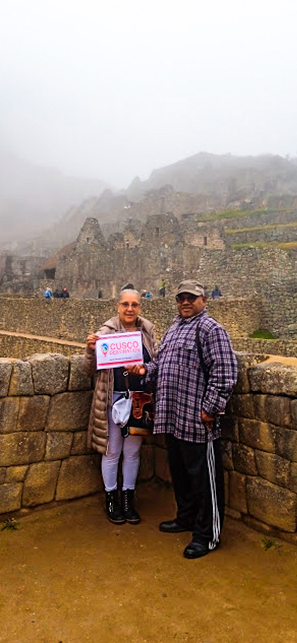


Tour Cusco Imperial 5 días, caminar por los atractivos culturales más representativos dentro de la ciudad, y también llegar a conocer el hermoso Valle Sagrado, pasando una noche en Aguas Calientes, llegue a la maravillosa ciudadela de Machu Picchu, y finalmente podrá caminar por la Montaña de Colores, y finalmente tomarte fotos en la hermosa laguna Humantay.
Contamos con todas las medidas de bioseguridad
Reserva Ahora:
![]() VIAJA Y CONOCE EL PERU !!!
VIAJA Y CONOCE EL PERU !!! ![]()
![]() LLAMA Y HAZ TU RESERVACION:
LLAMA Y HAZ TU RESERVACION:
WhatsApp https://bit.ly/mapi5d
![]() – 084 650500
– 084 650500
![]() info@cuscodestination.com
info@cuscodestination.com
![]() http://bit.ly/CuscoDestination
http://bit.ly/CuscoDestination
SOMOS “CUSCO DESTINATION Travel agency” Operadora de Viajes En Cusco
Monday 13 February 2023
MACHU PICCHU
IMPORTANT INFORMATION:
Machu Picchu is one of the 7 Wonders of the Modern World, Heritage of Humanity, Historical Sanctuary of Peru and probably the most important archaeological site in Latin America.
Machu Picchu es majestic architecture comprises 140 structures throughout the citadel.
Machu Picchu was built by the Inca Pachacutec around the year 1460.
After being forgotten, it was only in 1911 that the American Hiram Bingham reached Machu Picchu on an expedition and spread the site worldwide.
Its main buildings of Machu Picchu are the Intihuatana, the Temple of the Sun and the Temple of the Three Windows.
Wednesday 10 June 2020
Choquequirao, basic information - CHOQUEQUIRAO TREK TO MACHU PICCHU
Choquequirao is a Quechua word that means 'Cradle of Gold'. The name comes from the nomination of a hill near the archaeological site.
Where it is located?
Choquequirao is located in one of the fringes of the snowy Salkantay, north of the Apurímac River. It is currently located in the Santa Teresa district, La Convencion province, Cusco department, Peru.
How high is it?
Choquequirao is located 3,033 meters above sea level (m.s.n.m.). Due to its location, it is presumed that this Inca site served as a checkpoint between the main Inca sites such as Pisac, Cusco and Machu Picchu.
What's in Choquequirao?
Choquequirao has only been excavated by 30%. Despite this, it already has several very important Inca buildings:
Main square - The main square or Huaqaypata divided the enclosure into two. It is a two-story stone construction. Along with this, there are other buildings connected to each other.
Colcas - Typical constructions of the main Inca centers. In Choquequirao, these platforms have internal subdivisions. The purpose of these warehouses was to store products for food, clothing and others.
Platforms - Choquequirao has a significant number of platforms for cultivation. In the western sector there are 22 engravings in the form of a flame arranged on 15 platforms. These figures are known as the 'Flames of the Sun'.
Housing - In the highest part of Choquequirao, there are up to 5 buildings whose purpose was probably housing for the priests of the compound. This Inca site is believed to have been an important ceremonial center.
Inca Cemetery - Also known as the 'Triumphal Wall'. There were found 17 funeral bundles and a water trough called "The House of the Fall of Water".
Kallankas - These rectangular buildings had multiple functions such as workshop, administrative center, meeting space, etc. In Choquequirao there are 2 Kallankas on whose walls there were gutters that supplied water.
Ushnu - This oval platform construction sits on top of a hill. Due to the wall that surrounds it and the privileged view of the snow-capped mountains, the river and the entire enclosure; it is believed to have had a religious purpose.
CHOQUEQUIRAO TREK TO MACHU PICCHU 7 DAYS

Day 1: CUSCO - CACHORA - COCAMASANA - PLAYA ROSALINA.
We will pick you up at your hotel in a private bus. We start from Cusco, then we go to the town of Cachora (3100 masl), here we find the carriers and support staff, in Cachora we’ll start our walk, after 2 hours of walking we reach Capuliyoc (2915 m) from there we’ll have a beautiful view of the snowy peaks Padrayoc, Wayna Cachora and the Apurimac valley. Then we’ll descend toward Coca Masana (2330m) where the climate becomes warmer and the flora and fauna begin to change. Finally we reach the Rosalina beach (1550m) located on the bank of the Apurimac River where we will have dinner and spend the night.
- Meals: Lunch, Dinner
- Acomodación: Camp, Playa Rosalina 1550 msnm
- Climate : warm and sunny
- Distance Travelled: Approximately 12km
- Hiking time : 6 hour
Day 2: PLAYA ROSALINA – CHOQUEQUIRAO.
This day is the hardest of the five days, we will get up very early. After breakfast, we begin our trek by a steep road for about 5 hours until we reach Raqaypata where we will have lunch. Throughout the walk we will observe many orchids and wild flowers, many birds. From Raqaypata we’ll walk for about two hours to the archaeological site of Choquequirao and there we will observe the sunset and the flight of the condor. Our campsite will be installed outside the ruins.
- Meals: Breakfast, Lunch, Dinner
- Acomodación: Camp, Choquekiraw 3100 msnm
- Climate : warm and cold at night
- Distance Travelled: Approximately 14km
- Hiking time : 7 hour
Day 3: CHOQUEQUIRAO - PINCHINUYOC
After breakfast. We dedicate this mornig to explore the ruins of Choquequirao, and have a little rest before lunch. In the afternoon we begin our trek by a steep road for about 2 hours until we reach Pinchinuyoc where we will camp for the night. This is definitely the easiest day of the trip
- Meals: Breakfast, Lunch, Dinner
- Acomodación: Camp, Pinchinuyoc 2100msnm.
- Climate : warm, windy and cold at night
- Distance Travelled: Approximately 12km
- Hiking time : 8 hour
Day 4: PINCHINUYOC – RIO BLANCO - MAIZAL.
After breakfast, we will hike down hill for 2 hours and arrive at the canyon of the Rio Blanco (1990 m / 6527 feet), where you can dip your feet in the cool waters. where we have a rest before starting a difficult climb to our campsite of Maizal (2100 m / 6889 f.) The climb is 3- 4 hours long. Este es probablemente el día más difícil del viaje, pero si se ha preparado bien y está decidido, tendrá éxito. Y la cerveza fría a su llegada sabrá aún mejor.
- Meals: Breakfast, Lunch, Dinner
- Climate : warm and hummed
- Acomodación: Camp, Maizal 2100 msnm.
- Distance Travelled: Approximately 17km
- Hiking time : 8 hour
Day 5: MAIZAL - YANAMA - DRIVE TO LUCMABAMBA
After our breakfast, we will begin our trek of about 3 hours approximately until we reach the old Victoria mine, then we will walk uphill until we reach Victoria pass (4130mt / 13,546 ft). There are spectacular views from the pass as we descend to the charming village of Yanama (about 2 hours walk) following a section with some well constructed inca trail.
here we take the local transport all the way to Lucmabamba. Along the way, we get to enjoy the gorgeous views of snow-capped mountains and wáterfalls.
- Meals: Breakfast, Lunch, Dinner
- Climate : cold and windy
- Acomodación: Camp, Lucmabamba 1900msnm.
- Distance Travelled: Approximately 20 km
- Hiking time : 9 hour
Day 6: LUCMABAMBA - LLACTAPATA - AGUAS CALIENTES
Your final day of hiking: On this day we well hike for 3 hours by a Inca trail spectacular up through lush coffee and tropical fruit plantations, into pristine cloud forest, until reaching the Inca remains of Llactapata (2,700 m / 8,907 ft). The view across of Machu Picchu is magnificent. Few tourists have ever seen it from this side.
Then we hike downhill for 2 hours to the hydroelectric plant where we have lunch. From here you have two choice. Either wait for the short but spectacular train ride (no included), or hike two to three hours along the rail track to the tourist town of Machu Picchu Pueblo and your hostel for the night.
- Meals: Breakfast, Lunch, Dinner
- Climate : cold
- Acomodación: Hostel, Aguas Calientes 1650msnm.
- Distance Travelled: Approximately 9 km
- Hiking time : 4 hour
Day 7: MACHU PICCHU - CUSCO
After an early breakfast at the hotel, we walk uphill to Machu Picchu at 5:00 am. or take the bus from Aguas Calientes to Machu Picchu (Optional bus $16 each way), upon arrival at the Citadel we can appreciate the enigmatic beauty and the incomparable example of architectural perfection and hydraulics of one of the 7 Wonders of the Modern World, we will have a guided tour of about 2 hours, where we can appreciate the Main Plaza, the Circular Tower, Intihuatana, The Royal Quarters, the Temple of the Three Windows and the Cemetery, you are then given free time to stroll around the citadel . You will have all morning in Machu Picchu to take pictures, maybe to climb the Wayna Picchu or Machu Picchu Mountain, enjoy this mystical place. Then we´ll descend by bus to Aguas Calientes for lunch and then calmly return by train to Ollantaytambo where our tourist transport to the city of Cusco will be expecting us, and will later transfer you to your hotel.
OTHER ACTIVITIES:
Climb up Huayna Picchu and appreciate the beauty and magnificence of Machu Picchu from there (We recommend that you book in advance) Not Included
Climb Machu Picchu Mountain and appreciate the beauty and magnificence of Machu Picchu from there (We recommend that you book in advance) Not Included
Visit the new local museum or the hot springs in Aguas Calientes later in the day. Not Included
- Meals: Breakfast
- Tour: 2 hour guided tour of Machu Picchu
CHOQUEQUIRAO TREK TO MACHU PICCHU 8 DAYS

Day 1: CUSCO - CACHORA - COCAMASANA - PLAYA ROSALINA.
We will pick you up at your hotel in a private bus. We start from Cusco, then we go to the town of Cachora (3100 masl), here we find the carriers and support staff, in Cachora we’ll start our walk, after 2 hours of walking we reach Capuliyoc (2915 m) from there we’ll have a beautiful view of the snowy peaks Padrayoc, Wayna Cachora and the Apurimac valley. Then we’ll descend toward Coca Masana (2330m) where the climate becomes warmer and the flora and fauna begin to change. Finally we reach the Rosalina beach (1550m) located on the bank of the Apurimac River where we will have dinner and spend the night.
- Meals: Lunch, Dinner
- Acomodación: Camp, Playa Rosalina 1550 msnm
- Climate : warm and sunny
- Distance Travelled: Approximately 12km
- Hiking time : 6 hour
Day 2: PLAYA ROSALINA – CHOQUEQUIRAO.
This day is the hardest of the five days, we will get up very early. After breakfast, we begin our trek by a steep road for about 5 hours until we reach Raqaypata where we will have lunch. Throughout the walk we will observe many orchids and wild flowers, many birds. From Raqaypata we’ll walk for about two hours to the archaeological site of Choquequirao and there we will observe the sunset and the flight of the condor. Our campsite will be installed outside the ruins.
- Meals: Breakfast, Lunch, Dinner
- Acomodación: Camp, Choquekiraw 3100 msnm
- Climate : warm and cold at night
- Distance Travelled: Approximately 14km
- Hiking time : 7 hour
Day 3: CHOQUEQUIRAO - MAIZAL
After breakfast. We dedicate this mornig to explore the Choquequirao, and then start our trek passing for Choquequirao Ruins, uphill through cloud forest, Mountains and valleys to reach the Choquequirao pass. There will observe different species of birds, different varieties of orchids, and local coca plantations. then we will continue our trek until we reach the Blanco river where we will have lunch and you can dip your feet in the cool waters, we have a rest before starting a difficult climb to our campsite of Maizal (3000 m / 9842 f.) The climb is 3- 4 hours long.
- Meals: Breakfast, Lunch, Dinner
- Acomodación: Camp, Maizal 3000msnm.
- Climate : warm, windy and cold at night
- Distance Travelled: Approximately 18km
- Hiking time : 8 hour
Day 4: MAIZAL - YANAMA.
Due to the ecosystem’s constant changes, this day is both the most ardous and the most spectacular one. After breakfast, we will begin our walk where you can enjoy the view of the beautiful landscape. Since the Inca trail in this region is not in good conditions during the rainy season, we ask you to watch your steps carefully. In San Juan (4170m/13681f) we will enjoy the beautiful view of the valleys, the mountains and the glaciers, from which some of the latter peak more than 5000m/16404f. Our camping place will be in the little village of Yanama (3530m/11581f).
- Meals: Breakfast, Lunch, Dinner
- Climate : warm and hummed
- Acomodación: Camp, Yanama 3530 msnm.
- Distance Travelled: Approximately 17km
- Hiking time : 8 hour
Day 5: YANAMA - TOTORA
Early in the morning, we will head for the highest pass of this trip - Yanama (4670m). If we are lucky we will even see a condor flying. During the day, we will enjoy frequently the view of snow capped mountains such as Salkantay (6264m) and Pintuyu (5450m). Our camping place will be in the valley of Totora pampa (3100m).
- Meals: Breakfast, Lunch, Dinner
- Climate : cold and windy
- Acomodación: Camp, Totora 3100 msnm.
- Distance Travelled: Approximately 20 km
- Hiking time : 9 hour
Day 6: TOTORA - PLAYA - SANTA TERESA
At Totora pampa we will get the chance to meet Quechua-speaking Andean people who live from agriculture and cattle breeding. The vegetation on our way gets more and more bizarre and reveals its diversity of orchids, bromelains and other plants. We will also see some plantations for coffee, papaya, passion fruit and avocado. Our camping site will be in La Playa (2100m/6890f) or in Santa Teres (1600m/5249f). Note: According to the group’s whishes, it is possible to change the itinerary a bit and visit the hot springs in Santa Teresa this day.
- Meals: Breakfast,
- Climate : warm
- Acomodación: Camp, Santa Teresa 1600msnm.
- Distance Travelled: Approximately 18 km
- Hiking time : 10 hour
Day 7: SANTA TERESA - AGUAS CALIENTES
The last breakfast with our crew, after drive to hydroelectric 40 min where is the start point for hike to Aguas Calientes 3 hours, on the trail is clear to appreciate a lot type of orchid and birds, the big scenery is the view to Machu Picchu city is situated dense a bizarre vegetation and offers an exceptional view of the mountain Machu Picchu, for sick or tired kickers optional train service (US $ 18.00) there we will spend the night in a hotel in Aguas Calientes.
- Meals: Breakfast, Lunch, Dinner
- Climate : warm
- Acomodación: Hostel, Aguas Calientes 2050msnm.
- Distance Travelled: Approximately 9 km
- Hiking time : 4 hour
Day 8: MACHU PICCHU - CUSCO
After an early breakfast at the hotel, we walk uphill to Machu Picchu at 5:00 am. or take the bus from Aguas Calientes to Machu Picchu (Optional bus $16 each way), upon arrival at the Citadel we can appreciate the enigmatic beauty and the incomparable example of architectural perfection and hydraulics of one of the 7 Wonders of the Modern World, we will have a guided tour of about 2 hours, where we can appreciate the Main Plaza, the Circular Tower, Intihuatana, The Royal Quarters, the Temple of the Three Windows and the Cemetery, you are then given free time to stroll around the citadel . You will have all morning in Machu Picchu to take pictures, maybe to climb the Wayna Picchu or Machu Picchu Mountain, enjoy this mystical place. Then we´ll descend by bus to Aguas Calientes for lunch and then calmly return by train to Ollantaytambo where our tourist transport to the city of Cusco will be expecting us, and will later transfer you to your hotel.
OTHER ACTIVITIES:
Climb up Huayna Picchu and appreciate the beauty and magnificence of Machu Picchu from there (We recommend that you book in advance) Not Included
Climb Machu Picchu Mountain and appreciate the beauty and magnificence of Machu Picchu from there (We recommend that you book in advance) Not Included
Visit the new local museum or the hot springs in Aguas Calientes later in the day. Not Included
- Meals: Breakfast
- Tour: 2 hour guided tour of Machu Picchu
Friday 20 March 2020
INCA TRAIL TO MACHU PICCHU
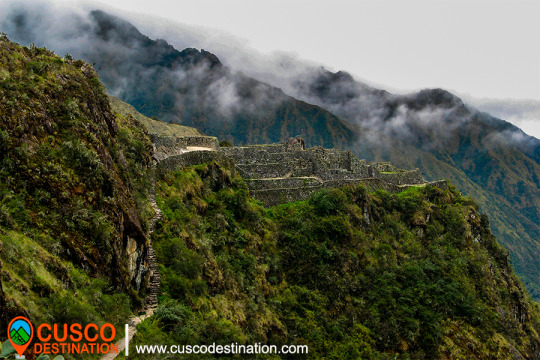
The Qhapac Ñan managed to cover up to 30 thousand kilometers from the current countries of Peru, Ecuador and part of Bolivia, Chile, Argentina and Colombia. The trekking route from the Inca Trail to Machu Picchu is only a small part of the extensive network of roads of the Qhapac Ñan.
The Inca Trail to Machu Picchu

The Inca Trail was revealed to the world in 1915 when it was being excavated in the Inca City. Three decades later, the route was traced by the Viking expedition in 1942. Today, thousands of visitors decide to travel the 43 kilometers to the ‘Puerta del Sol’ in Machu Picchu.
However, Machu Picchu is not the only archaeological site that you will see on the Inca Trail. On the tour you will also appreciate the ruins of Llactapata, the archaeological site of Runkurakay, Saycamarca, Phuyupatamarca and Wiñaywayna.
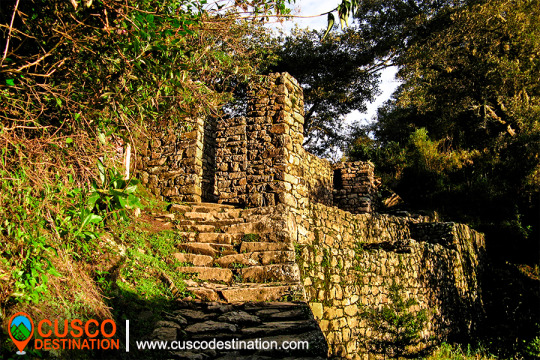
There are trains and buses that can take you directly to Machu Picchu. However, the experience of arriving as the Incas did for centuries is unmatched.
Versions of the Inca Trail to Machu Picchu
Not all people have the days necessary to travel the Inca Trail (4 days and 3 nights). That is why there are 3 versions depending on the time you have:- Classic Inca Trail: 4 days and 3 nights (43 kilometers of walking).
- Imperial Inca Trail: 5 days and 4 nights (43 kilometers of walking).
- Short Inca Trail: 2 days and 1 night (12 kilometer walk).
About tickets to enter the Inca Trail
Due to the high demand for tickets, you must get the entrance tickets to the Inca Trail well in advance (6 months). The purchase is made only online through the website of an authorized tourism agency.In total 500 people enter the trails of the Inca Trail every day. Of these, only 200 are tourists. The rest are support staff such as cooks, porters, guides. The ticket to enter the Inca Trail includes support staff.
Did not find availability to do the Inca Trail?
The only way to enter the Wonder of the World is by train through the Sacred Valley of the Incas or by the alternative route from Santa María to Machu Picchu. Entrance tickets to Machu Picchu must also be reserved in advance.Do you want to enter the Huayna Picchu after the Inca Trail? Request entry into the agency paying an extra price. You can also request a more luxurious train service.
INFORMATION OF INCA TRAIL TO MACHU PICCHU
Saturday 29 February 2020
HISTORY OF HUCHUY QOSQO

But unlike the places mentioned above Huchuy Qosqo has a peculiar architecture: the buildings have been built on polished stone bases of fine finish, with clay plaster (they are the best preserved parts) and the highest floors are made of adobe.
There is a kallanka (rectangular enclosure that could measure up to 70 meters long and that were important state centers where Inca officials were staying) of at least 40 to 50 meters long. Also a remarkable building with two stone floors and an adobe upper one. There are also large terraces, a very large square and a large Inca gate through which a very well preserved road leads from Tambomachay.
The Hispanic chronicles indicate that Huchuy Qosqo (probably a site known in Inca times as Caquia Jaquijahuana) was the work and favorite place of the Inca Wiracocha. To this, Maria Rostworoski adds, in her work "History of Tahuantinsuyo", that this sovereign strengthened the conquest over the villages of the Urubamba valley and that he chose as his successor his son Inca Urco who, dizzy with power and vice, He proved to be totally unable to govern. The Inca royalty was very obfuscated with this election and tried to conspire to impose another son of Wiracocha, Prince Cusi Yupanqui. Social unrest and tension increased every day and to make everything worse, the darkest night fell over Cuzco: the Chancas reached the gates of the capital and were willing to destroy it. It is the year of 1438. Wiracocha leaves the city to his fate and, accompanied by his son Inca Urco, takes refuge in its palaces in the Urubamba Valley, among which was Huchuy Qosqo.
After the Hispanic conquest, Gonzalo Pizarro found here the mummy that supposedly belonged to the Inca Wiracocha and ordered it burned. The descendants of the Inca kept the ashes in a jar that many years later the chronicler Polo de Ondegardo would discover.
HOW TO VISIT:
It is possible to visit Huchuy Qosqo in three ways, the first one walking from Cusco and Tambomachay along the Inca trail. The other way is up from the Sacred Valley after crossing the Wilcamayo River (now Vilcanota), from Chinchero.
HUCHUY QOSQO TREK INFORMATION.
Saturday 15 February 2020
Information of the thermomedical waters of Lares
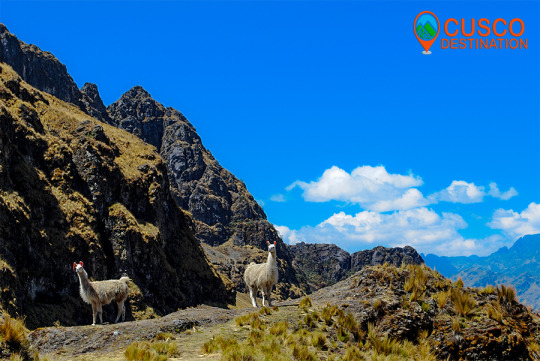
The Thermal Baths of Lares, are one of these thermomedical resources that the traveler will be able to enjoy when he goes to a region like Cusco. These thermal baths, as the name suggests, are located in the district of Lares, which is located in the province of Calca.
Lares Thermal Baths are made up of a group of four swimming pools. These are fed by waters that are tempered to different degrees. The temperature of the thermal pools of Lares fluctuate between 36 ° C and 44 ° C and the pools have dimensions between 17 m2 and 120 m2, with depths that do not exceed one and a half meters, making it suitable for a greater number of visitors.
These thermal baths are visited by the properties that present their waters, which in addition to offering comfort and stress relief are able to relieve certain conditions. This is achieved thanks to the fact that the waters of these Thermal Baths of Lares are fed by minerals such as sodium, potassium, magnesium, calcium, iron, zinc, among many others, which together allow us to fight diseases such as arthritis , osteoporosis, in addition to contributing to the rehabilitation of broken bones, combating muscle, stomach problems, among many others.
To get to the Lares Thermal Baths, the visitor has to travel from the city of Cusco to Calca, this tour can take approximately an hour and a half, and can be done on a public bus, this usually charges approximately S / 4.00 per passenger. Already in Calca a combi is taken that in two hours leaves it in the district of Lares, the cost of this vehicle does not usually exceed S / 10.00. From Lares you should only continue on foot for approximately 1 km to the thermal baths. This last tour can be completed in just fifteen minutes, depending on the physical conditions of the visitor, if you want you can also rent a taxi.
Those who visit the Thermal Baths of Lares should keep in mind that the only tourist infrastructure that exists in the place is the hot springs, and that the closest services can only be found in the city of Calca and Lares, despite these inconveniences, the environment The Lares Thermal Baths are more than suitable for camping, so the traveler will have the opportunity to enjoy the benefits of these waters for a longer time.
In order to access the Lares Thermal Baths, the visitor has to make a payment whose cost ranges between S / 3.00 and S / 5.00. Visits to these thermal baths can be made at any time of the day.
LARES TREK INFORMATION
Friday 31 January 2020
What is in Choquequirao?
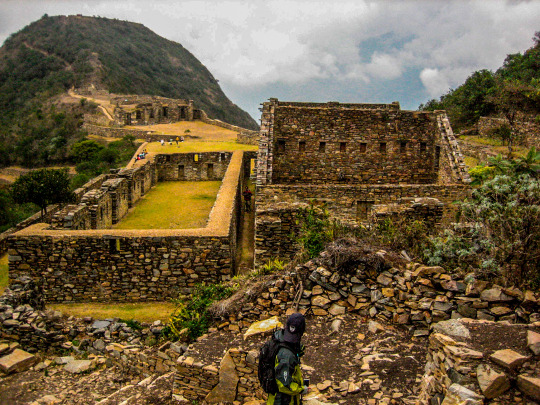
- Main square: the main square or Huaqaypata divided the site in two. It is a two-story stone construction. Next to him, there are other buildings connected to each other.
- Colcas - Typical buildings of the main Inca centers. In Choquequirao, these platforms have internal subdivisions. The purpose of these deposits was to store products for food, clothing and others.
- Platforms: Choquequirao has a significant number of platforms for cultivation. In the western sector there are 22 flame-shaped engravings arranged on 15 platforms. These figures are known as the ‘Flames of the Sun’.
- Housing: in the highest part of Choquequirao, there are up to 5 buildings whose purpose was probably housing for the priests of the enclosure. It is believed that this Inca site was an important ceremonial center.
- Inca Cemetery - Also known as the ‘Triunfal Wall’. 17 funeral bullets and a water gutter called "The House of the Water Fall" were found.
- Kallankas: these rectangular buildings had multiple functions, such as workshop, administrative center, meeting space, etc. In Choquequirao there are 2 Kallankas on whose walls there were canals that supplied water.
- Ushnu: This oval platform construction is located on top of a hill. Due to the surrounding wall and the privileged view of the snow-capped mountains, the river and the whole enclosure; It is believed that it had a religious purpose.
Thursday 26 December 2019
CACHICATA TREK: USEFUL TRAVEL INFORMATION

The adventure will take you to one of the most spectacular routes, full of beautiful and spectacular views of the sacred valley and the mystical city of Ollantaytambo, this is one of the beauties that hides the tour to the Sacred Valley in all its splendor. This place was dedicated to the carving and extraction of the stones that were used for the construction of Ollantaytambo and many surrounding precincts.
Location:
It is located 9 km from the Ollantaytambo district, "The Living Inca City" in the province of Urubamba, Cusco region.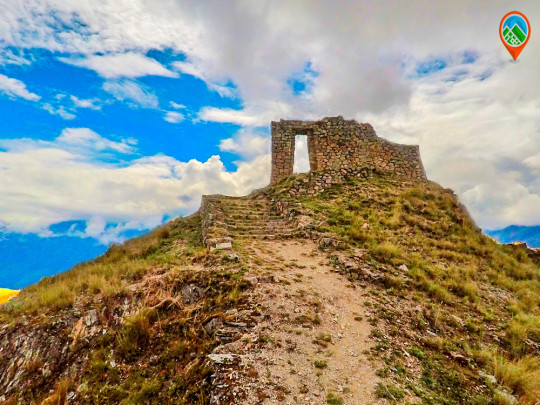
How to get?
On your own:The first thing is to go from the city of Cusco in a car or bus to Ollantaytambo (approximately 2 hours), once in the square of Ollantaytambo we will begin the walk: from the Plaza de Armas de Ollantaytambo take the Main Street towards Cusco, until arriving to the track, there instead of turning left where the stone street ends, continue straight on the path until you reach the Inca bridge. Cross it and walk to the right. After a 15-20 minute walk uphill, take a slope to the left at the fork, marked by a rock painted with "Las Canteras". In 20 minutes, agricultural platforms and foundations of old buildings will come into view. Follow the right trail and ignore other paths that cross. The trail will merge with a larger path. Continue through the mountain slope on this main road to the Lowe quarry, which is indicated by small stone foundations above boulders. (Minutes before reaching the quarry, the path passes through an irrigation canal, the last chance to cool off).
The first quarry is 2 hours after leaving the Plaza de Armas. Just after passing this quarry, continue on a smaller path to the left. Follow a series of zigzags to the hillside, for 45 minutes or an hour. Shortly after, the second much larger quarry will be visible on the left. The small fields on the right are a great place to camp. As a reference, a rock in the middle of the quarry painted with "National Institute of Culture".
Hiring a tour with a tour operator:
Definitely the safest and recommended option would be this, because they deal with the transfer to this archeological area better and resolve any inconvenience that may exist, are responsible for transportation, guidance, refreshment, etc.What attractions do you have?
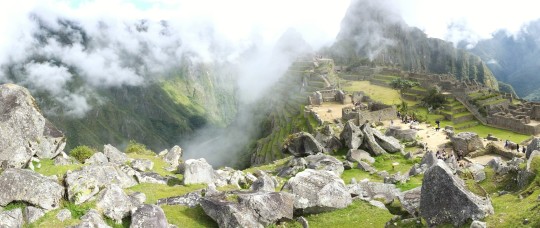
It has three groups of quarries:
- Molle Pucro, the most accessible and popular quarry.
- Sirkusirkuyoc (it was the largest of the three), shows evidence of having been in full operation when the Spaniards entered this area.
- Kantirayoq or Cacchicata, where another type of extraction of minerals and precious stones was practiced.
- We will also visit the slopes of Cachiccata, the pyramid of Paqariqtampu and the imposing surrounding snow-capped mountains.
- We can find the so-called "Tired Stones" that stayed during the trip to Ollantaytambo and in some parts of the town.
- In the same way we can observe the great work they did at the time of moving the gigantic stones to build the Ollantaytambo enclosures.
- This place is also known by the Intipunku (cover of the Sun), considered as a Sacred place of Spiritual retreat since ancient times, where you can feel the energy of the Apus (mountain spirits) and recharge positive energies on the heights of the Sacred Valley.
Recommendations:
- Be sure to eat and be well fed; You can bring snacks such as energy bars, nuts, chocolatillos.
- Drink water: Stay hydrated during the walk is very important.
- Take Coca Mate or chew Coca Leaves will help reduce and prevent altitude sickness.
- Sunscreen: Be sure to apply a minimum sunscreen every 02 hours and wear sunglasses accompanied by a hat or hat.
- Rain protection: There is always a chance of rain so be sure to wear rain clothes.
- Wear warm and waterproof jackets and light clothes for the sun.
Thursday 12 September 2019
HUCHUY QOSQO TREK TO MACHU PICCHU
HUCHUY QOSQO ROUTE TO MACHU PICCHU INFORMATION:
- HUCHUY QOSQO TREK 2 DAYS
- HUCHUY QOSQO TREK 3 DAYS

On a historical level, this site is known as the preferred place of the Inca Wiracocha, which he chose as a place of rest and retreat and, where, according to the myth, he died at an advanced age (80 years old). It is also said that this area was already populated by different ethnicities, before the Inca arrival, so they had to be previously defeated. Another striking story about the area is that the Inca Wiracocha had not come only there, but in the company of his son: Inca Urco, the worst ruler of the Empire, who abandoned their Tahuantinsuyo fate after the Chanca attack that ended up being stopped by his other son Cusi Inca Yupanqui. Finally, another reason that makes this site important is the discovery of a mummified body, found during the Conquest, and that would have been attributed to the old Inca monarch, although later burned by Francisco Pizarro's brother.
As for its location, it can be added in addition to the access feature, which provides the visitor (and those who lived in the archaeological center) a great view of the snowy Pitusiray along with the town of Calca.
Regarding the architectural remains that have still been preserved on the site, we can say of them that there are at least 2 buildings, in addition to the presence of platforms and cliffs. Among the buildings, built on the basis of some of stone and others of adobe, we can observe, one of three floors, without name; This first construction is characterized by the presence of the mixture of the construction materials, since the two lower levels are made of carved stone, while the last one preserves adobe-based structure. The second building, also without a name, is a rectangular-based construction, made with adobones, which is believed to have had the purpose of being a space for the labor learning of the women of the Empire. There are also vestiges of remains of smaller enclosures that are almost destroyed due to natural events, including rains and vegetation in the area.
To get to the place the exact location of Huchuy Qosqo is necessary to make a walk, due to the narrow road, it lasts 3 hours from Lamay; on the other hand you can also go from Chinchero, using half a day of pilgrimage; and if you want to make a trip to the site, of longer duration, in which camping is required, you can take the route from the City of Cusco, since this route takes the entire day. The entrance to the site is totally free, although it is recommended that the tourist be done in the company of guides or in groups; Another recommendation is that this tour be carried out in the dry weather period, between the months of April and October, to avoid the slippery area due to the rains.
Wednesday 11 September 2019
HUCHUY QOSQO TREK FULL INFORMATION
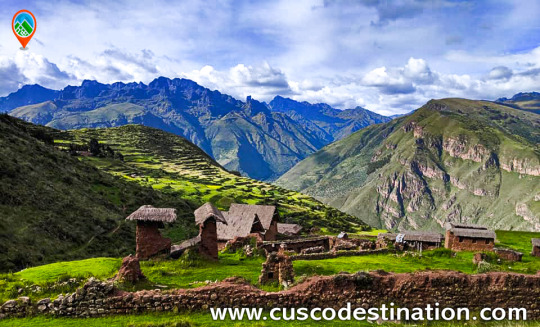
But unlike the places mentioned above Huchuy Qosqo has a peculiar architecture: the buildings have been built on polished stone bases of fine finish, with clay plaster (they are the best preserved parts) and the highest floors are made of adobe.
Treks of Huchuy Qosqo Trek
- HUCHUY QOSQO TREK FULL DAY
- HUCHUY QOSQO TREK 2 DAYS
- HUCHUY QOSQO TREK 3 DAYS
The Hispanic chronicles indicate that Huchuy Qosqo (probably a site known in Inca times as Caquia Jaquijahuana) was the work and favorite place of the Inca Wiracocha. To this, Maria Rostworoski adds, in her work "History of Tahuantinsuyo", that this sovereign strengthened the conquest over the villages of the Urubamba Valley and that he chose as his successor his son Inca Urco who, dizzy from power and vice, He proved to be totally unable to govern. The Inca royalty was very obfuscated with this election and tried to conspire to impose another son of Wiracocha, Prince Cusi Yupanqui. Social unrest and tension increased every day and to make everything worse, the darkest night fell over Cuzco: the Chancas reached the gates of the capital and were willing to destroy it. It is the year of 1438. Wiracocha leaves the city to his fate and, accompanied by his son Inca Urco, takes refuge in its palaces in the Urubamba Valley, among which was Huchuy Qosqo.
After the Hispanic conquest, Gonzalo Pizarro found here the mummy that supposedly belonged to the Inca Wiracocha and ordered it burned. The descendants of the Inca kept the ashes in a jar that many years later the chronicler Polo de Ondegardo would discover.
Characteristics of the visit
It is possible to visit Huchuy Qosqo in three ways, the first one walking from Cusco and Tambomachay along the Inca trail. The other way is up from the Sacred Valley after crossing the Wilcamayo River (now Vilcanota) and the Chinchero route.
Tuesday 10 September 2019
INCA QUARRY ROUTE FULL INFORMATION

Useful Information of INCA QUARRY TREK
- Starting Altitude - 3350 meters / 10990 feet .
- Highest Altitude - 4500m / 14,764ft
- Walking Distance - 25 km / 15.5 miles
- Meals - 4 breakfast, 3 lunch, 3 dinner, 3 tea times, 3 wake up tea
- Overall Difficulty - Moderate
- STARTING POINT: - Cusco at your hotel
IMPORTANT INFORMATION:
The Community of Cachiccata consists of 80 families and a total of approximately 300 people.
The quarries of Cachiccata is one of the most important attractions, these quarries were widely exploited in the Inca period. From this mine they selected and transported the stones from the archaeological remains of Ollantaytambo. By means of own bearing and thrust techniques, the stones were transferred to this old center. On the way we can see giant semilabrated stones that were being transported. Near the quarries we can also visit some pre-Hispanic chullpas (ancient funerary tower).
Machu Picchu is one of the 7 Wonders of the Modern World, Heritage of Humanity, Historical Sanctuary of Peru and probably the most important archaeological site in Latin America.
Machu Picchu is majestic architecture comprises 140 structures throughout the citadel.
Machu Picchu is was built by the Inca Pachacutec around the year 1460
After being forgotten, it was only in 1911 that the American Hiram Bingham reached Machu Picchu on an expedition and spread the site worldwide.
Brief Itinerary
- DAY 1: CUSCO – SOQMA – RAYAN
- DAY 2: RAYAN – INTI PUNKU – CHOQUETACARPO
- DAY 3: CHOQUETACARPO – OLLANTAYTAMBO – AGUAS CALIENTES
- DAY 4: MACHU PICCHU - CUSCO
Tuesday 20 August 2019
LARES TREK INFORMATION
Seven Cataracts-Qanchis Paccha is the new Private Conservation Area (ACP) recognized for the period of 10 years in the Cusco region by the Ministry of Environment. Located in the district of Lares (province of Calca, Cusco) this ACP reaffirms the commitment of the Quishuarani Collana peasant community to the conservation of natural heritage by being the second Private Conservation Area established in its territory.
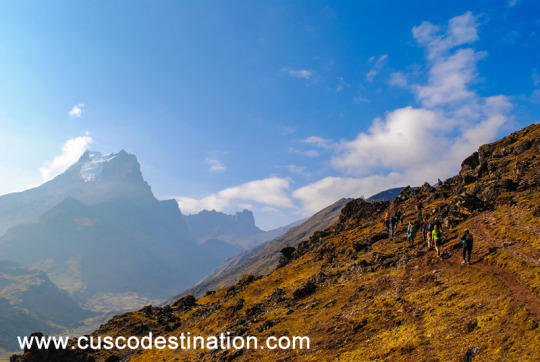
Recognized by Ministerial Resolution No. 214-2015-MINAM, on an area of 1,008.51 hectares, this area is a reflection of the community's initiative to integrate local actors in the care of the biodiversity of queñua forests, a work that It has been doing since 2009 with the establishment of the ACP Hatun Queñua-Quishuarani Ccollana, Sernanp informed INFOREGION. MORE INFORMATION: Lares Trek
Located 110 kilometers from the city of Cusco, the area stands out for its great biodiversity and natural landscapes that are highly attractive for tourism development. In this ACP, Queñua forests predominate that fulfill a function of climate regulator and constitute the only habitat of three species of birds in danger of extinction: the pechicenizo bull, the cejiblanco scissor and the royal churrete. In addition, they provide a wide range of plants for medicinal use that are used by the local community.
The area has a snowy chain, the most important being the Colquecampana snowfall, a set of lagoons in which different species of birds are observed such as the bandurria de la puna, the jergon duck and the crestón duck. In the highest areas there are snowfalls that form basin headwaters and constitute the main sources of water for the inhabitants of the sector.
Within the landscape and experiential potential offered by this ACP, the imposing waterfall called Siete Cataratas or Qanchis Paccha stands out. Likewise, visitors will be able to observe different species of fauna such as the Andean cat, the taruca, the puma, the vizcacha and the Andean fox.
Cusco Destination
Friday 16 August 2019
General information of Choquequirao
More Information: Choquequirao Trek

Location
The ruins of Choquequirao are located at 13 ° 32 ’latitude and 77 ° 44’ west longitude, it is located 3033 meters above sea level in the snowy mountains of Salkantay north of the Apurimac river in the district of Santa Teresa province of the convention department of Cusco.
How to get
Currently to reach the last Inca fortress is the land route, the best known route of how to get to Choquequirao is taking the road to Abancay, and at km 154 choose the detour that will lead you to the town of Cachora.
The route to Choquequirao has narrow roads which you have to walk very carefully, also have a good physical condition and the appropriate equipment for this walk.
Weather
Due to its height, Choquequirao enjoys a mild climate. However, it is necessary to highlight that the Choquequirao road is warm due to the Apurimac canyon.
Thursday 15 August 2019
ROUTE OF CHOQUEQUIRAO TO MACHU PICCHU
Choquequirao, the last Inca refuge
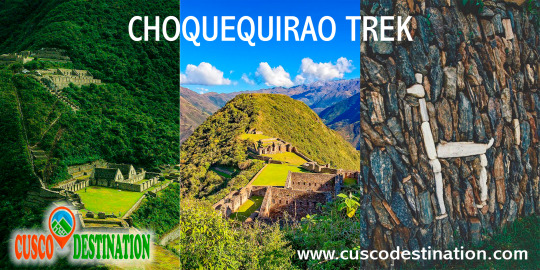
- The ruins of Choquequirao are an ancient Inca city located between the mountains belonging to the snowy Salkantay in Cusco.
- In 1909, the American explorer Hiram Bingham visited this place of difficult access. However, it was not until the mid-1970s that the first excavations of this archaeological site began.
- Currently only 30% of the immense site was excavated. Despite this it is one of the most mysterious tourist attractions due to its similarity with Machu Picchu.
- It is known as the last Inca refuge due to the belief that the remnants of Manco Inca were hidden there after the Spanish conquest.
- It is also known as the ‘Sacred Sister of Machu Picchu’ due to the architectural similarity with the Inca Citadel.
- The only way to get there is through a 2-day hiking trail along rivers, high mountains and breathtaking landscapes.
Machu Picchu, Wonder of the World
- Machu Picchu is an Inca site located in the eastern part of the central Andes.
- It belongs to the foothills of Salkantay, in southern Peru.
- It is believed that this site was the urban, religious center and residence of the Inca Pachacutec, who commanded its construction in the early fifteenth century.
- With the Spanish conquest, the place was gradually abandoned until it was covered by the abundant vegetation characteristic of the area.
- In 1911, the American explorer Hiram Bingham made known to the world the importance of the archaeological complex.
- In 2007, the Inca llaqta was chosen as one of the Wonders of the modern World. Since then, tourist traffic has skyrocketed.
- Today, its mysterious stone constructions around beautiful mountainous landscapes are one of the most visited places on the planet.
- It is estimated that around 1 million people visit it a year.
Thursday 8 August 2019
SALKANTAY MOUNTAIN INFORMATION
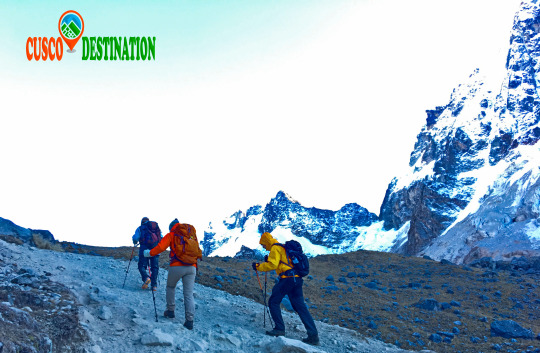
The Salkantay is the Apu and tutelary snow of Cusco.
To get to it, you will cross beautiful Andean landscapes, open 5,000 meters. and the possibility of observing Condors and Alpacas in their natural habitat. You can take baths in natural hot springs from the depths of the earth, different fruit plants and a variety of orchids. More Information Salkantay Trek.
The Cordillera de Vilcabamba, where the Salcantay massif is located, is a beautiful and lonely area. Dominated by the same Apu Salcantay has numerous high-elevation snowfalls, such as Tucarhuay (5,910 m.a.s.l.), Veronica (5,682 m.a.s.l.) and Huacayhuilca (5,361 m.a.s.l.), among others.
All of them are visible from the Puyupatamarca area during the Inca Trail to Machu Picchu. Geography is difficult and capricious around the contour of this attractive mountain complex. The Salkantay is surrounded by deep valleys and gorges, which makes its tour interesting but at the same time exhausting.
Although the difficulty of this Trek is slightly higher than that of the Inca Trail, it is not a high level Trek. Indeed, it is longer (5 days instead of 4), taller, more wild but there is also your interest.
This Trek does not disappoint the most demanding or lovers of nature, hiking, emotions; those same emotions that make him feel invulnerable, only in the world, on the roof of the world, in a nutshell ... feel alive!
To make the excursion you must contact a specialized tourism agency. Cusco Destination
Thursday 1 August 2019
SANTA TERESA THERMAL WATERS
The Hot Springs of Santa Teresa are the most beautiful in Cusco. They are immersed in nature, on the banks of the Urubamba River and at the foot of the mountain.

A unique experience to enjoy during your trip to Cusco, where you can relax your body and mind while contemplating the native landscape.
The hot springs of Santa Teresa are located in Cocalmayo, Sacred Valley of the Incas, Cusco.
The thermal complex, located at a height of 1,600 m.a.s.l., is built on the slopes of the mountain and on the banks of the Urubamba River.
A unique space, where visitors enjoy a pleasant moment immersed in the warm waters of Santa Teresa while contemplating a unique natural beauty.
The thermal baths of Santa Teresa are conformed by three pools of different sizes and depths, which are supplied with medicinal water that varies between 40ºC and 44ºC.
Medicinal waters have healing properties to treat skin ulcers, bone pain and rheumatism.
The Santa Teresa Hot Springs pools are surrounded by nature. Its bottom is composed of soft sand and is surrounded by rocks, vegetation, the sound of the Urubamba River and the mountain.
Near the pools, there are jets of cold water coming from the Uripata lagoons, which provide a very pleasant feeling. And a hydromassage system.
The Santa Teresa hot springs are fully equipped with bathrooms, showers, dressing rooms, soccer fields, camping space, cafeteria, kiosk (where visitors can buy food and drinks) and a viewpoint.
It is a very nice place to rest after visiting the ruins of Machu Picchu, the Inca roads, Choquequirao and other tours in Cusco.
The hot springs are open every day of the year, almost 24 hours a day. Its wide time slot allows you to enjoy the starry nights inside the pools, which is amazing since the stars are reflected in the crystal clear water as if it were a mirror.
Chemical composition of the water in the Santa Teresa hot springs:
The thermal baths of Santa Teresa differ from the other thermal waters of Peru by their crystalline waters.
The thermal waters of Cocalmayo or Santa Teresa are composed of minerals such as calcium, sodium, bicarbonate, sulfate, magnesium, among others.
TRAVEL TYPE! Do not forget to bring mosquito repellent to your visit to the Hot Springs of Santa Teresa.
Nature gives us a unique and unique setting in these medicinal waters, but also presents the typical insects of the jungle areas. With a repellent you will avoid small mosquito bites.
How to get to the hot springs of Santa Teresa?
The Hot Springs of Santa Teresa (or Cocalmayo, as many know them) are located at kilometer 135 of the former Cusco - Quillabamba railway line, on the left bank of the Urubamba River.
To get to the thermal baths from the city of Cusco you can choose to do it by bus, bicycle, motorcycle, train or quadricycle.
By Bus from Cusco to Santa Teresa
You must go to the Cruz del Sur - Santiago bus terminal, in the city of Cusco.
There, take the bus that goes to the district of Santa María. This journey (Cusco City - Santa María) lasts approximately 5 hours.
Once in the town of Santa María, take a taxi or a means of transport to Santa Teresa. The duration is approximately one hour.
Having arrived in the town of Santa Teresa, walk for 20 minutes to the thermal baths or take a taxi whose journey lasts only 10 minutes.
By train from Cusco to Santa Teresa
Go to the San Pedro train station, in the city of Cusco. Get off at the end of the tour, at the hydroelectric power station.
From there take a taxi, combi or walk to the Plaza de Armas de Santa Teresa. From this place, return to take a shuttle service to the thermal baths (this last journey takes approximately 10 minutes). While if you want to do it walking, it will last approximately 20 minutes.
If you want to reach the thermal baths of Santa Teresa from the hydroelectric power station, you should know that the journey will take approximately 2 hours.
By train from Ollantaytambo to Santa Teresa
If you are in Ollantaytambo and bought your train ticket to Machu Picchu, get off at the hydroelectric power station and, as it says in the previous point, take a taxi or patch up to Santa Teresa (20 minutes) Or walk to the thermal baths about 2 hours .
By bike or motorcycle to Santa Teresa
Some tour operators offer bike tours as part of their Adventure Tourism program.
Usually, the tours last 4 days. inca jungle
It starts from the city of Cusco to Ollantaytambo, then to the Abra de Malaga reserve, located at 4,350 m.a.s.l. surrounding the snowy Urubamba and continue to the district of Santa María.
The next day, the trip continues to Santa Teresa where you can enjoy the hot spring night.
The tour ends in Machu Picchu Pueblo to visit the ruins of Machu Picchu the next day.
This excursion is also done by motorcycle, in this case the duration of the tour is shorter.
The best time to visit the thermal baths of Santa Teresa
The best time to go to the Hot Springs of Santa Teresa (Cocalmayo) is during the months of April to October.
Santa Teresa in recent years has grown quite a lot due to the investments that have been made in accommodation, restaurants and other tourist services.
Santa Teresa - Cocalmayo Hot Springs prices
The values of the tickets to the Termas de Santa Teresa in Cusco belong to the 2018 tariff.
Foreign adult ……………………… S /. 10
National adult …………………………. S /. 5
Local Adult ………………………………. S /. 2.50
Wednesday 31 July 2019
INKA JUNGLE TRAIL TO MACHU PICCHU
There is nothing better than taking a hot bath in nature, while enjoying a drink of “aguaymanto”. Taking a bath in the Thermal Baths of Cocalmayo, is a great experience. It is situated between a huge river and a small mountain. In Cocalmayo bathers can enjoy outdoor swimming pools fed by natural hot springs, built between a small mountain full of vegetation and the Urubamba river. You will find 3 swimming pools of different sizes and depths. The water temperature varies between 38 and 44 ºC and unlike most hot springs in Peru, it has clear waters. Cold showers are very close to the pools, the water comes from the Uripata lagoons and is very refreshing; The mixture of waters will give you a very comforting feeling.
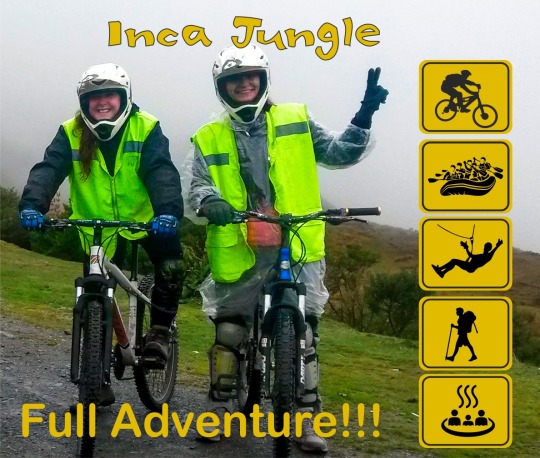
Inca jungle to machu picchu
The benefits: Located at 1,600 m.a.s.l. Its waters are rich in essential minerals such as sodium, magnesium, bicarbonate, calcium, sulfate and others, which have healing properties on the skin, bones, muscles and joints.
Where are the thermal baths of Cocalmayo?
The thermal baths of Cocalmayo are in the valley of the Urubamba River (Vilcanota) in a cozy and relaxing place, its naturally heated pools reach 44 ºC. They are located 20 minutes from the town of Santa Teresa in the province of the Convention, in Cusco - Peru; precisely at kilometer 135 of the railway line between Cusco and Quillabamba, at 1,600 m.a.s.l.
Wednesday 3 July 2019
CHOQUEQUIRAO TREK TO MACHU PICCHU
Because of its altitude, Choquequirao has a temperate climate. However, it should be noted that the road to Choquequirao is warm because of the Apurimac canyon.
Choquequirao was presumably used as a control site to ensure access to areas of Vilcabamba, connecting the jungle with other major centers like Pisac and Machu Picchu. The archaeological remains of Choquequirao are comprised of buildings and terraces on different levels, in which their terraces stand out due to 22 carvings on stone with figures known as "Llamas del Sol" arranged in 15 platforms towards the snowy Qori Hauyrachina. Choquequirao features a large system of platforms/terraces.
Machu Picchu
Machu Picchu is one of the 7 Wonders of the Modern World, Heritage of Humanity, Historical Sanctuary of Peruand probably the most important archaeological site in Latin America.
Its majestic architecture comprises 140 structures throughout the citadel.
It was built by the Inca Pachacutec around the year 1460.
After being forgotten, it was only in 1911 that the American Hiram Bingham reached Machu Picchu on an expedition and spread the site worldwide.
Its main buildings are the Intihuatana, the Temple of the Sun and the Temple of the Three Windows.
In 1913 it received worldwide attention when the National Geographic Society dedicated its entire print run in April to the newly rediscovered city.
Brief Itinerary
- Day 1: CUSCO - CACHORA - COCAMASANA - PLAYA ROSALINA.
- Day 2: PLAYA ROSALINA – CHOQUEQUIRAO.
- Day 3: CHOQUEQUIRAO - PINCHINUYOC
- Day 4: PINCHINUYOC – RIO BLANCO - MAIZAL.
- Day 5: MAIZAL - YANAMA - DRIVE TO LUCMABAMBA.
- Day 6: LUCMABAMBA - LLACTAPATA - AGUAS CALIENTES.
- Day 7: MACHU PICCHU - CUSCO.
Wednesday 26 June 2019
MACHU PICCHU ROUTE TO MACHU PICCHU
Salkantay is a snow-capped mountain in Peru located in the department of Cuzco; It is one of the main peaks of the Vilcabamba mountain range. It reaches an altitude of 6,271 meters. It presents two summits covered by snow.
The Salkantay Route, also known as the " New Inca Trail", is located north of the city of Cusco, following the Cusco - Limatambo highway, making a detour past Limatambo until you reach Mollepata.

It is very sunny during the day, but a cold at night. The temperature falls below 0 ° C at night during the months of June to September. In the season from December to March it is very rainy reason why it is not recommended to go on these dates.
The best time for the weather, to do this walk is during the months of March to September.
This hike reaches a height of 4,600 meters above sea level at its highest point this on the slopes of the same snowy Salkantay.
The buses from Cusco to Mollepata depart very early from 4:00 to 5:00 and go through Limatambo, from Mollepata is where the trek to the snowy Salkantay starts, after climbing a step up it is possible to have an impressive pyramidal view of the Salkantay, one of the most beautiful snows of Cusco.
From the same Mollepata it takes two days to go down to Huayllabamba and merge with the second day of the Inca Trail.
On the way there are herds of cattle and sheep, orchids, bear with glasses, medicinal plants of the Inca eponca, small variety of birds, fruit trees such as Orange, Papaya, bananas, etc.
- Note: The spectacled bear to see it you have to have a bit of luck.
If you want to visit this Inca Citadel we have the trek for you: Salkantay Trek Challenge, Salkantay Trek Express,Salkantay Trek classic.


























